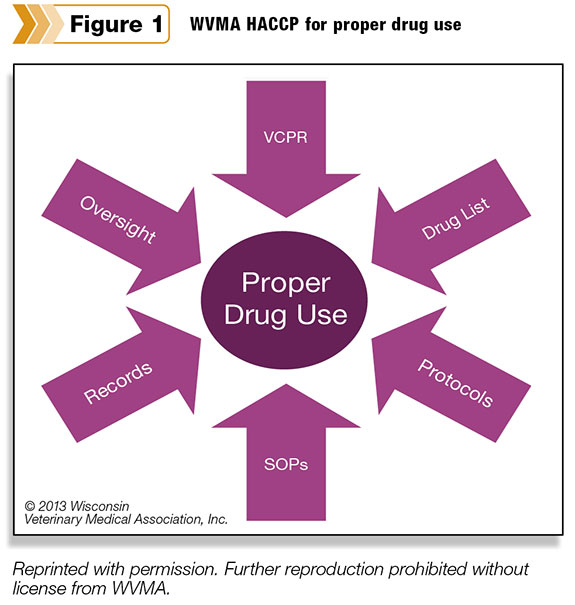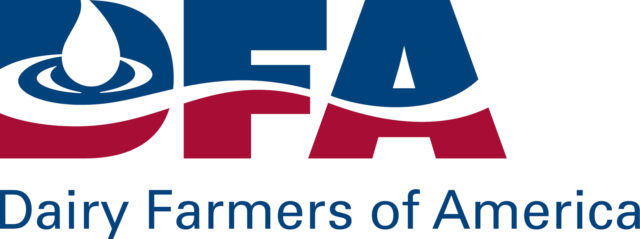Zero isn’t a goal farmers often set on their dairies, unless you’re talking about avoiding drug residues.
As part of a broad collaboration between the Wisconsin Veterinary Medical Association (WVMA) and the Professional Dairy Producers of Wisconsin (PDPW), the two groups are working together to reduce the number of dairies named on the USDA Animal and Plant Health Inspection Service and U.S. Food and Drug Administration’s (drug residue) repeat violator list.
Shelly Mayer, executive director of the PDPW, says there were a small number of violators total but a notable enough number to warrant action.
In Wisconsin, prior to April 2011, 23 dairies had more than one meat violation in a 12-month period, putting them on the multi-violator list.
Wisconsin led the nation in the amount of residues popping up on the meat side, according to Mayer. “That is what kicked us into action,” she says. “When we got that communication, it did not take dairy farmers long to say, ‘We can do better.’”
And Wisconsin lived up to its word, bringing the number of multi-violators down to 0 in 2012. That’s thanks to the WVMA-PDPW partnership, the broader initiative of which is known as the What Matters program, which encompasses food safety, drug residues, proper drug use and education.
“With regard to drug use, we want to make sure we’re using the products according to label – under the supervision and advice of veterinarians,” Mayer says.
She adds, “We want to earn and maintain the confidence of our consumers who eat our product. So we need to continue to be diligent on information and education.”
Food safety and animal welfare are issues that belong to dairy farmers, Mayer says.
“We understand our obligation and the need to avoid residues. Veterinarians and producers need to work closer together. It is important that we are getting accurate information out as an industry so we ensure we’re bringing the best meat to the market and consumer.”
The collaboration builds upon the existing PDPW’s producer communication and education outreach and WVMA’s Hazard Analysis and Critical Control Points for Proper Drug Use (HACCP for Proper Drug Use).
The HACCP plan was created by the WVMA Residue Task Force, represented by a group of Wisconsin-based practicing veterinarians.
HACCP for Proper Drug Use, according to WVMA’s executive director Kim Brown Pokorny, marks a solution for consistently producing safe meat and milk and ensuring proper drug use. Though just one piece of the What Matters initiative, it’s significant.
The nonregulatory grassroots initiative works best with joint participation of veterinarians on the farm, the owners and managers, and the cowside people – the individuals that make up the veterinarian-client-patient relationship or team.
Initially, it was the meat processing side driving change. Soon, PDPW and WVMA realized that they could work together efficiently to effect that change.
The WVMA HACCP for Proper Drug Use comprises six steps that target food safety and long-term drug use on dairies. The six steps, according to WVMA, are:

1. Identifying the veterinarian-client-patient relationship (VCPR) team
2. Identifying all drugs used and how they are used
3. Developing protocols based on the farm and skill sets of employees
4. Developing SOPs based on the farm and skill sets of employees
5. Defining what needs to be recorded and putting systems in place to record it
6. Veterinary oversight to evaluate drug use, protocols and SOP drift, opportunities for training and retraining employees, management and economic information
“Implementing these six steps allows producers to maintain product (dairy beef and milk) integrity,” WVMA said in a statement. Pokorny of WVMA says the steps are always a “continuing improvement” plan.
Veterinarians receive a full-day training and a resource training binder. In addition, the WVMA offers shorter, educational awareness presentations.
The six steps need to be customized to each individual premises, and is dependent on management of the farm and employee skill sets.
“Every dairy has different management styles, different staff skill sets. This can’t be a paper binder stuck on the shelf; this is living and breathing all the time on the farm. The goal is to meet the farm where they’re at and put pieces in place,” Pokorny says.
“The six-step on-farm HACCP – developed by veterinarians through WVMA – happens one farm at a time,” Mayer says. “As dairy producers, we are already committed to high-quality products, but we don’t do a good job of being able to talk about it.
Now we are working more with veterinarians to help speak about what their clients are doing, providing information to dairy producers and milk processors.”
Keith York, considered by his colleagues as a “passionate game changer” on the milk and meat side of the business, is vice president of the board of PDPW and a dairy producer.
He was on the committee when Wisconsin came out as a top dairy beef residue state and helped form a committee to investigate. He led the working group that turned into the What Matters group.
The group was dedicated to the education of farmers, veterinarians and ensuring that everyone understands how to produce the very best dairy meat and milk.
Mainly the goal was to educate farmers on use of drugs and to follow the label.
“Pay attention; keep better records; know what cows you treated; know everyone who is treating the cow – these were all simple steps toward change on the farms,” York says.
He says the main focus was for the individual dairies to talk to veterinarians.
“Together they developed a plan for each farm individually because all farms are different. We had SOPs and protocols before we started.
We met with our veterinarian and went over an oversight program to make sure we were reviewing protocols and keeping accurate records. It’s not really a drug problem – it’s a people problem and it’s an education problem.”
Program continues growing
To date, close to 150 presentations on the program have been given with much national interest, including the FDA, and growing interest from other states, according to Pokorny.
In addition, WVMA has presented to National Cattlemen’s Association and will also offer training at the upcoming American Association of Bovine Practitioners meeting.
Pokorny says, “There’s not another program like this in the country. It’s a fresh look at the issue.”
Other states in talks with WVMA include Minnesota, Illinois and Michigan. Currently, the program is entirely on the backs of volunteers. But WVMA is in the process of hiring its first full-time veterinarian devoted to the association’s HACCP for Proper Drug Use program.
1. Project goals, according to WVMA and PDPW, are primarily fivefold:
2. Work together with veterinarians and dairy producers to ensure safe meat and milk.
3. Continue to reduce the number of tissue residues resulting from bob veal and dairy cull cows.
4. Maintain safe milk, as consumers are increasingly aware that meat and milk come from the same animals.
5. Continue to implement the program on farms in Wisconsin.
Make training available to veterinarians and veterinary associations in other states, so it can be replicated around the country.
Beyond those goals, WVMA and PDPW are looking to make “mindset shifts” to alter habits and behaviors.
First, it is important to treat meat and milk as food products and recognize that drug residues are a people problem, not a drug problem. “We must ask, ‘Where are people failing us?’” Pokorny says.
“There are immediate benefits to the producer – better managed food safety, safer products to the consumer in the U.S. or internationally,” Pokorny says.
The short-term future goals for the program include: getting it implemented on more Wisconsin farms, then expanding it to other states; continuing to monitor residues and assess where FDA results show the latest residues are; and offering long-term support and training.
“This has to be a long-term sustainable mindset shift – everlasting. It’s not a quick fix and forget,” Pokorny says.
Adds Mayer, “The dairy industry is at a great time; we have a product the consumer wants. We are always looking at places where we can do better. Biggest message to producers is to make sure you’re in communication with your veterinarians servicing the farm.
More regulation doesn’t protect people. People protect people. Our industry can do that with a lot of diligence and persistence.
“Ultimately, we want to produce the purest products possible, maintain confidence and maintain markets,” Mayer says.
Importantly, adds York, this is a continual improvement program – “not something where we’re going to back off” – noting that within the last four months, up to four more farms have landed on the repeat violators list.
“That’s why we’re still training, still having meetings with veterinarians and meetings with processors. We have to have records of treatment and a valid veterinary-client-patient relationship. And we must monitor daily.
“It’s so important to talk with your veterinarian on how to treat your cows and keep good records,” York says. “They can help you reduce occurrences. But we know every once in a while there will be mistakes. In the end, we all want safe food and better care of animals.” PD
Skernivitz is a freelancer writer based in Cleveland, Ohio.




